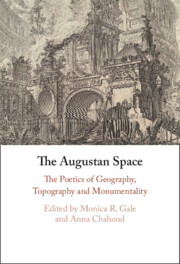Refine search
Actions for selected content:
59 results
Memorializing the Nation-State: Minar-e-Pakistan between Memory and History
-
- Journal:
- Critical Pakistan Studies ,
- Published online by Cambridge University Press:
- 15 October 2025, pp. 1-21
-
- Article
-
- You have access
- Open access
- HTML
- Export citation
Pigs, pannage, and the solstice: isotopic insights from prehistoric feasting at Newgrange
-
- Journal:
- Proceedings of the Prehistoric Society , First View
- Published online by Cambridge University Press:
- 19 August 2025, pp. 1-21
-
- Article
-
- You have access
- Open access
- HTML
- Export citation
12 - The Catacombs of Rome
- from Part I - Architecture and Iconography
-
- Book:
- The Cambridge Encyclopaedia of Late Antique Art and Archaeology
- Published online:
- 04 July 2025
- Print publication:
- 31 July 2025, pp 212-243
-
- Chapter
- Export citation
46 - Armenia
- from Part IV - Regional and Ethnic Variety
-
- Book:
- The Cambridge Encyclopaedia of Late Antique Art and Archaeology
- Published online:
- 04 July 2025
- Print publication:
- 31 July 2025, pp 811-819
-
- Chapter
- Export citation
Chapter 10 - Epilogue
-
- Book:
- Emigrant Soldiers
- Published online:
- 05 June 2025
- Print publication:
- 26 June 2025, pp 223-232
-
- Chapter
- Export citation
Beginning of the circle? Revised chronologies for Flagstones and Alington Avenue, Dorchester, Dorset
-
- Article
-
- You have access
- Open access
- HTML
- Export citation
Chapter 12 - Monuments and Consensus
- from Part II - Translations
-
-
- Book:
- The Roman Republic and Political Culture
- Published online:
- 30 January 2025
- Print publication:
- 06 February 2025, pp 350-373
-
- Chapter
- Export citation
Chapter 6 - Face to Face with the Ancestors
- from Part II - Translations
-
-
- Book:
- The Roman Republic and Political Culture
- Published online:
- 30 January 2025
- Print publication:
- 06 February 2025, pp 166-199
-
- Chapter
- Export citation
Introduction
-
-
- Book:
- The Augustan Space
- Published online:
- 14 June 2024
- Print publication:
- 27 June 2024, pp 1-22
-
- Chapter
- Export citation

The Augustan Space
- The Poetics of Geography, Topography and Monumentality
-
- Published online:
- 14 June 2024
- Print publication:
- 27 June 2024
Chapter 9 - Building Programs and Natural Disasters
- from Part II - The Making of a Capital
-
-
- Book:
- Antioch on the Orontes
- Published online:
- 06 June 2024
- Print publication:
- 06 June 2024, pp 119-138
-
- Chapter
- Export citation
Glitter and Graffiti: Labour, Expertise and the Feminist Remaking of Mexican National Heritage
-
- Journal:
- Journal of Latin American Studies / Volume 56 / Issue 2 / May 2024
- Published online by Cambridge University Press:
- 30 May 2024, pp. 305-328
- Print publication:
- May 2024
-
- Article
-
- You have access
- Open access
- HTML
- Export citation
“The Indian Side of the Question”: Settling the Story of Potawatomi Removal in the Twentieth-Century Midwest
-
- Journal:
- The Journal of the Gilded Age and Progressive Era / Volume 23 / Issue 2 / April 2024
- Published online by Cambridge University Press:
- 17 May 2024, pp. 170-189
- Print publication:
- April 2024
-
- Article
- Export citation
Chapter 1 - Memory and Mirage
-
- Book:
- Sparta and the Commemoration of War
- Published online:
- 08 December 2023
- Print publication:
- 21 December 2023, pp 1-32
-
- Chapter
- Export citation

Sparta and the Commemoration of War
-
- Published online:
- 08 December 2023
- Print publication:
- 21 December 2023
Chapter 3 - Sacrifice
- from Part I - Developing Ideals
-
- Book:
- Imagining War and Peace in Eighteenth-Century Britain, 1690–1820
- Published online:
- 10 January 2024
- Print publication:
- 23 November 2023, pp 75-99
-
- Chapter
- Export citation
Chapter 26 - #RhodesMustFall and the Reform of the Literature Curriculum
- from Part IV - Canon Revisions
-
-
- Book:
- Decolonizing the English Literary Curriculum
- Published online:
- 02 November 2023
- Print publication:
- 09 November 2023, pp 489-505
-
- Chapter
-
- You have access
- Open access
- HTML
- Export citation
4 - Dance and March: Music and Culture
-
- Book:
- The Strauss Dynasty and Habsburg Vienna
- Published online:
- 09 June 2023
- Print publication:
- 29 June 2023, pp 130-158
-
- Chapter
- Export citation
Chapter 2 - War and Cultural Memory at the Beginnings of Latin Literature
- from Part I - Writing Cultural Memory
-
-
- Book:
- Cultural Memory in Republican and Augustan Rome
- Published online:
- 27 April 2023
- Print publication:
- 11 May 2023, pp 23-41
-
- Chapter
- Export citation
